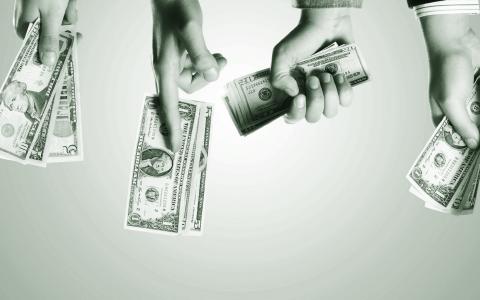
(Thrive Global) Anxiety isn’t just excessive worry, panic attacks, hypervigilance, heart, dizziness, and insomnia — it is also financially expensive. Affecting about 28% of the U.S. population at some point in their lifetime, anxiety costs the U.S. between $42.3 – $46.6 billion annually. Anxiety also accounts for about 30% of the total spending related to mental illness.
Given the huge financial impact anxiety has on the national and global economy, the individual cost of anxiety is equally stunning. Including the treatment costs (which are definitely a major expenditure), there are lots of little expenses that add up to huge financial losses.
Retail Therapy
People learn from a young age how to control their emotions and figure out ways to self-soothe. One such self-soothing strategy is retail therapy. Like many coping strategies, retail therapy is a way to exercise control. When everything feels out of control and unpredictable, shopping can provide an opportunity to exert authority. However, a recent study found that people who were upset tended to act more impulsively, which often led to increased spending on unnecessary goods in an attempt to improve their mood.
The downside of this strategy is immediately after the high of spending, comes the crash and realization of the financial ramifications. Chelsea Fagan of The Financial Diet, says “It’s not really until you’re looking at that receipt later that you realize ‘Okay, I was spending in this kind of panicked, stressed, fog state and I didn’t really need or want those things but that’s now a terrible financial decision that I have to live with.’” Not only has the initial stressor not actually been resolved, but now there is this bill to be paid as well. This stress is only compounded if money is already tight or an existing source of anxiety.
Public Transit
Even to the most zen person, public transit can be stressful and anxiety-provoking. But for many people with anxiety, taking the subway or public transit can feel impossible. Timetables change; transferring trains creates doubt, confusion, and worry; space is limited and a quick escape is not always possible; people are moving around, sitting next to you, and talking to fellow passengers — the list goes on. The fear and anxiety surrounding public transit could mean not leaving the house or relying on taxis or other more private means of transportation, which are infinitely more expensive. Considering that a one way ticket on public transit costs around $2.75 while a taxi ranges from $2.00 – $5.00 per mile (not including the initial fare), this cost of anxiety could quickly drain a person’s paycheck.
Confrontation Avoidance
One of the best ways to save money is by asking. In job negotiations, this means knowing your worth and requesting you be compensated accordingly. In housing, this could mean asking the landlord for a lower listing price or negotiating down a broker’s fee. However, anxiety often tells us that confrontation must be avoided at all costs. Anxiety also affects a person’s ability to effectively communicate, which can further complicate negotiations and cause even more stress and worry.
Economist Linda Babcock of Carnegie Mellon University estimates that “by not negotiating their job at the beginning of their career, they’re [young people] leaving anywhere between $1 million and $1.5 million on the table in lost earnings over their lifetime.” The same is true for housing: even negotiating down the monthly rent by $100 saves an annual of $1,200 — money that can then be saved or invested and gain interest.
Treatment
There are many different types of treatment for anxiety, however many of them aren’t exactly cheap. In fact, over 60% of individuals cite financial concerns as a major barrier to treatment. The average cost of therapy ranges from about $100 – $200 per session without insurance. But even with insurance, the average copay for seeing a specialist ranges from $30 – $50, which while much cheaper than the actual cost of therapy, is still costly. This means that even short-term therapy could cost anywhere from $450 – $3,000 and relative long-term therapy could range from $2,300 to $15,500.
In terms of pharmaceutical costs associated with anxiety, anti-anxiety medications can be cost-prohibitive as well. Name brand medications can cost hundreds of dollars for just a month supply: a 50 mg dosage of Zoloft can cost up to $358 a month; 30 mg of Cymbalta runs up to $470; and a 10 mg supply of Paxil can be worth about $210.
There are so many hidden costs associated with anxiety. These costs are compounded when the individual feels ashamed for their behaviors, believing that they are the ones at fault and getting stuck in the blame shame game. Anxiety doesn’t just affect one aspect of a person’s life: it touches every action, behavior, and choice. For people with anxiety, these costs are not your fault, you are doing your best, and you are not alone. For people without anxiety, judgement and unsolicited advice only hurts — it is your job to listen, offer validation, and support both the individual and the larger population. By helping to destigmatize anxiety, we can bring down the micro and macro costs of anxiety and help everybody feel a little less alone.



